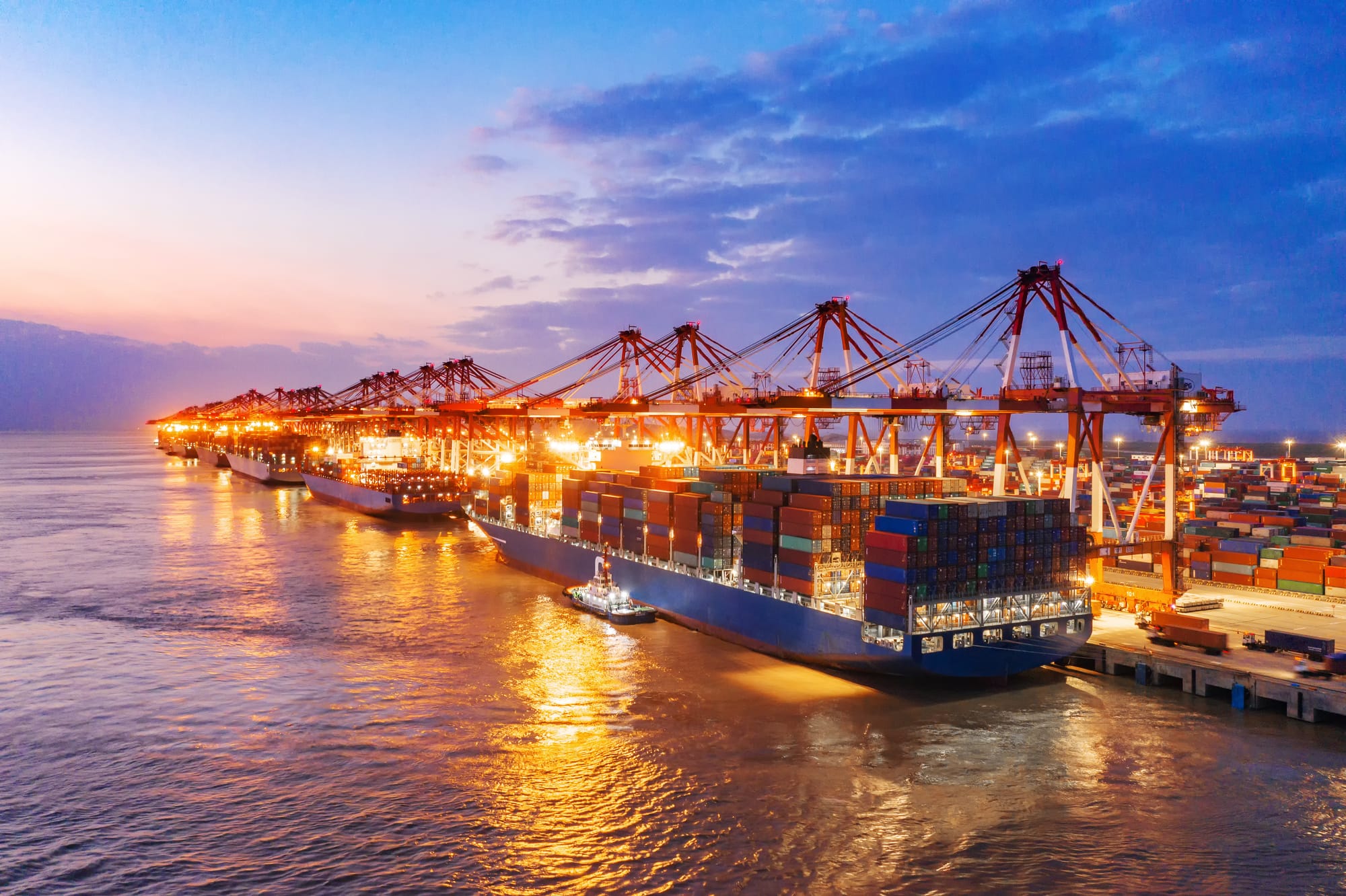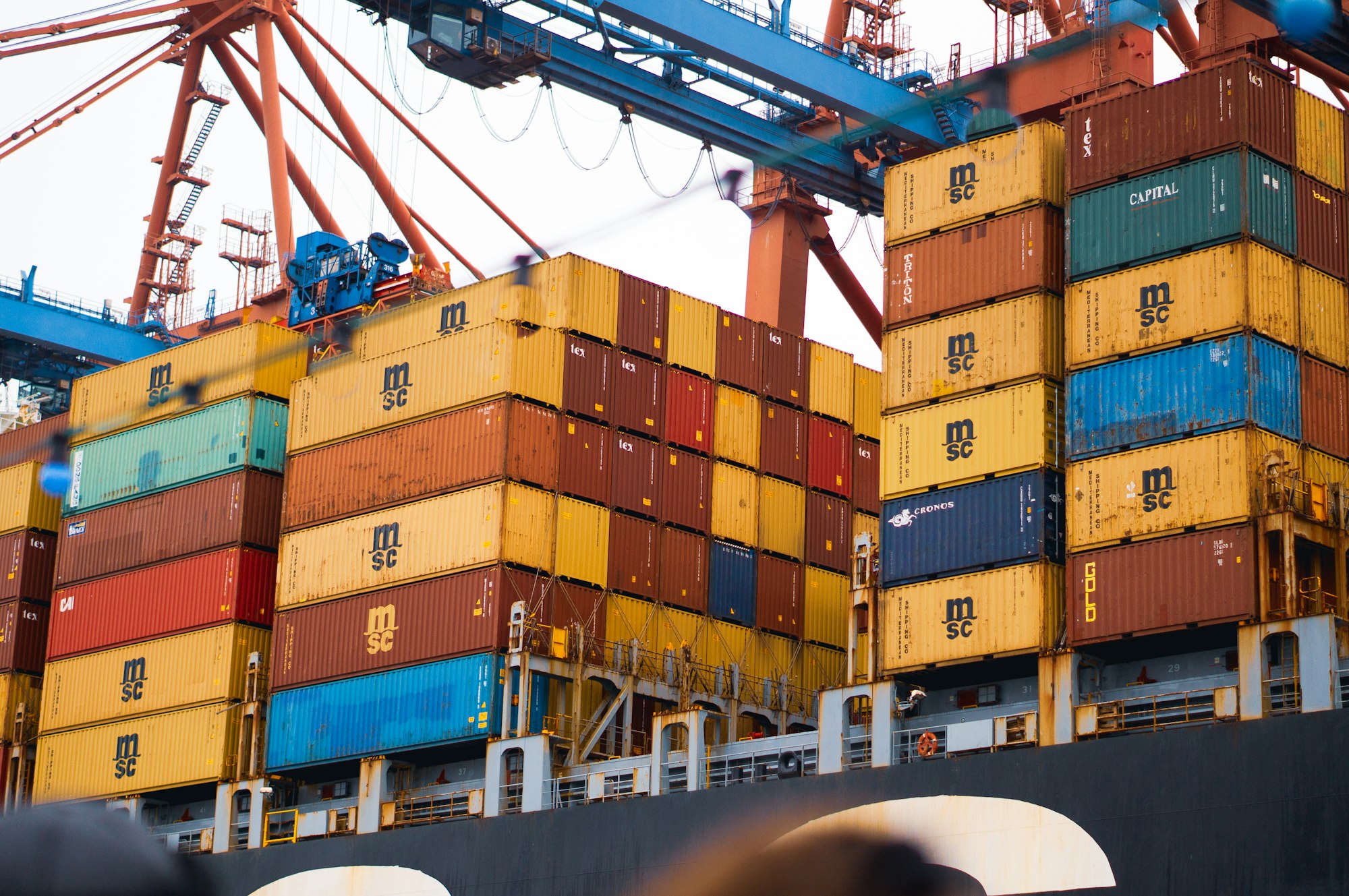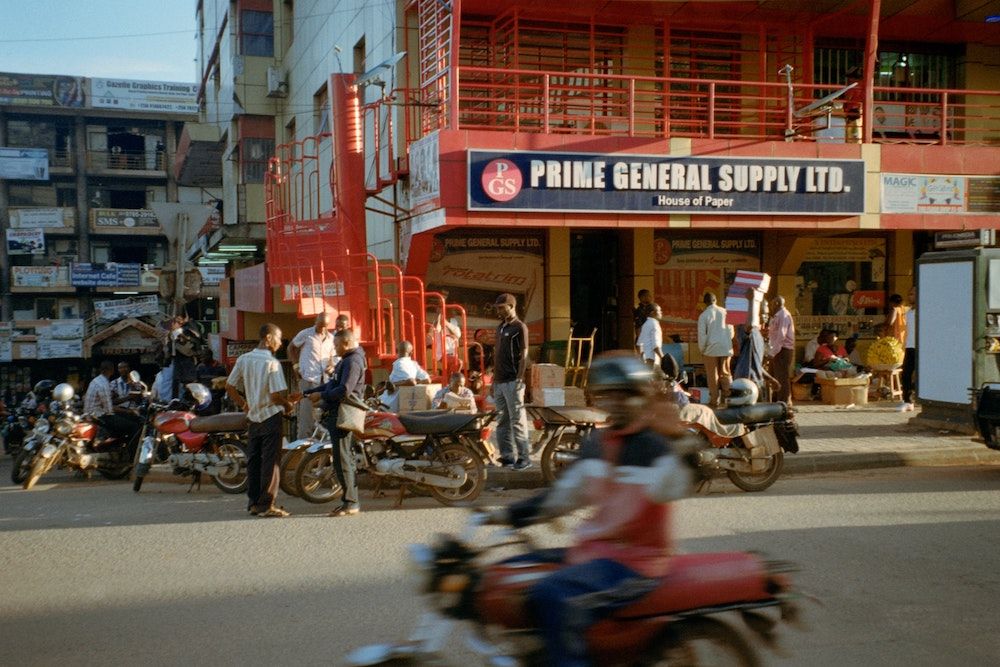The COVID-19 pandemic is having a transformational impact on trade. The World Trade Organisation predicts trade will shrink by 9.2 percent in 2020 compared with 2019, while the International Monetary Fund has said that the pandemic “is the worst crisis since the Great Depression and that it will take significant innovation on the policy front, at both the national and international levels to recover from this calamity.”
To some extent, COVID-19 has only accentuated adverse changes—growing nationalism, trade disputes, sovereignty concerns, and weak global leadership—already underway in the global trading system. But in the wake of the pandemic-induced lockdown, borders have been closed, domestic concerns about the supply of essential items have led to export bans, and market-distorting state aid has increased dramatically. Where once policymakers were focused on making global value chains more open and inclusive, now the rhetoric is about “reshoring production.” Such trends could exacerbate global inequality over the medium term.
Despite these ominous signs, the reality is that trade isn’t going away. In the short term, businesses will continue to trade in consumer goods, agricultural staples, and extractives. Open trade routes and international supply chains remain critical to controlling and defeating the pandemic. In the medium term, value chains may operate differently but they will recover and grow, trade in services will continue to accelerate, and new players will enter the market—players that may look very different from the corporate trading giants of the past.
So what can DAI and other trade and international development practitioners do to improve trade resilience, support recovery, and “build back better”? Can we help turn the crisis into an opportunity to catalyse reform and reimagine a more nimble, responsive, and inclusive trading system? What can be done to protect businesses and nurture new trade opportunities emerging in response to COVID-19? The following examples of how DAI trade projects are responding to the challenge shed light on these questions.
Can COVID-19 be Harnessed to Catalyse Reform and Modernise Trade Practices?
COVID-19’s immediate adverse impact on trade is indisputable. However, the crisis also has the potential to prompt change, including trade reforms that enable faster recovery and enhance future trade performance.
![container-ships[2].jpg](https://dai-assets.s3.amazonaws.com/blogs/container-ships%5B2%5D.jpg)
A massive ship moves goods from Southern Africa.
DAI’s six-country Foreign, Commonwealth & Development Office (FCDO)-funded Trade Forward Southern Africa programme provides an example of how support can be adjusted nimbly to advance reform opportunities emerging from the pandemic. Trade Forward had only mobilised in early March 2020. In normal times, the focus would have been on medium-term planning and exploring how best to support and deliver transformational change in trade policy. However, within weeks of the programme’s start, the World Health Organization declared a global pandemic, and the project pivoted to address two pressing issues:
- Identifying COVID-19-related changes to trade policy, the regulatory environment, and emerging market issues across the Southern Africa region; and
- Developing reform recommendations at the national level that would help businesses mitigate the damage wrought by the pandemic.
By encouraging a focus on high-impact reforms that could be quickly implemented, the crisis created an opportunity for Trade Foward to achieve something that it is often challenging for trade projects to deliver—immediate, visible impact. While the programme is still early in its implementation phase, many of its COVID-19-related recommendations have already been taken up by governments and donors. The FCDO, for example, committed to supporting the development of a web-based dashboard that will provide traders with real-time updates on policy developments.
A similar reform opportunity emerged in Pakistan, where the U.S. Agency for International Development (USAID) Pakistan Regional Integration Activity (PREIA) has worked on Pakistan-Afghanistan trade since 2015. As the pandemic hit Pakistan, border closures and new standard operating procedures immediately reduced trade between the two countries. A growing backlog at the border, inability to export perishable goods, and food security concerns led to political pressure for action. In July, an Executive Committee was tasked to develop proposals to tackle the bottlenecks hindering trade with Afghanistan. PREIA was able to share its existing, well-researched reform proposals with the Committee.
This exchange, combined with the Committee’s own detailed review of the trade and transit process, has accelerated several key transit and trade reforms that may otherwise have taken years to achieve. PREIA continues to support this process and in October helped to convene the public-private sector Pakistan-Afghanistan Trade and Investment Forum 2020. Focused on building trust and reviewing actions to reduce the costs of trade and transit, this high-level event promises to enhance trade, investment, and economic cooperation between the two countries.

The PREIA team helped to convene the recent public-private sector Pakistan-Afghanistan Trade and Investment Forum 2020, where Imran Khan, Prime Minister of Pakistan, at left, inaugurated the conference, with Asad Qaiser, Speaker of National Assembly of Pakistan. Photo: DAI.
Building Enterprise and Trade Resilience
COVID-19 has increased uncertainty for businesses and traders. Trade flows are changing, global value chains are working differently, it is harder to move goods across borders, and businesses are at greater risk. The immediate challenge is to ensure trade and business continuity. The medium- to longer-term challenge is to enable innovation and enhance resilience so businesses and trade can recover and build back better.
Both these challenges were front and centre as PREIA worked with the Government of Pakistan on identifying potential trade facilitation reforms. The immediate focus was to reduce the backlog of trade at the border with Afghanistan. However, this created the opportunity to “fast-track” reforms that would make it much easier and cheaper to trade with Afghanistan.
The first step was to remove new COVID-19-related border procedures that PREIA research demonstrated were not effective in limiting the spread of the disease—these ceased in July. PREIA then worked with the Executive Committee leading Pakistan’s reform process to prioritise “quick wins” that tackled critical bottlenecks. As a result, new commercial land border posts were opened to diversify trade traffic away from the two existing posts in Torkham and Chaman. Requirements to scan trucks at the border and inland terminals were relaxed. An effective monopoly on the supply of trackers to trucks was addressed by allowing additional firms to supply this equipment. The government is also working to improve regulation of shipping companies that currently impose prohibitive costs and requirements on traders.
COVID-19 prompted similar adaptation in Myanmar. The Economic Response Facility (ERF) in Myanmar is an innovative private sector development initiative within FCDO’s wider Business for Shared Prosperity Programme. With the advent of the pandemic, ERF pivoted quickly to help the Government of Myanmar understand the impact of the coronavirus on business and teamed up with the International Trade Centre (ITC) and UN Capital Development Fund to gather evidence and prepare policy ideas to inform development of the COVID-19 Economic Relief Plan.
This process included a business survey carried out by the Asia Foundation, covering 750 companies; exporter surveys; and policy notes focused on financial inclusion, medical supplies, foreign investment, and support to micro, small, and medium-sized enterprises (MSMEs). This evidence suggested that trade and business continuity was under severe stress. The Asia Foundation found that by May, 29 percent of enterprises had completely closed, profitability had declined, workers were being laid off, and half of enterprises saw their survival at risk. The garments, textiles, hotel, and tourism sectors were particularly hard hit.

ERF is helping the government in Myanmar assess how COVID-19 is affecting small firms. Photo: FCDO ERF.
These trends are worsening, and while COVID-19 is creating some commercial opportunities—in tech and financial inclusion, for example—there is a pressing need to prioritise reform activities and enhance coordination across the health and economic COVID-19 response. ERF and ITC continue to support this process and are encouraging the government to integrate COVID-19 emergency and recovery response within Myanmar’s existing Private Sector Development Action Plan, National Export Strategy, and investment response.
At a fundamental level, trade depends on businesses knowing what and how to trade. COVID-19 has disrupted traditional trade and information flows and imposed new requirements. In response, the Trade Forward team, for example, worked with FCDO and DAI’s Center for Digital Acceleration (CDA) to develop digital tools that improve business awareness and access to information, including the web-based dashboard noted above, which will help exporters monitor policy, regulatory, and procedural changes in Southern Africa; provide information on changes in trade flows; and identify opportunities for value chain diversification.
Beyond our trade practice, other parts of DAI have also been exploring how to help clients innovate in the face of COVID-19. For example, DAI’s Sustainable Business Group (SBG) has adapted its customized economic impact assessment services to provide near real-time data allowing public and private sector decision-makers to make informed, data-driven choices as they navigate the global crisis. SBG has also assisted MSMEs to develop more effective crisis response strategies, focused on first stabilizing, then strengthening, then pivoting their businesses. This MSME resilience toolkit can be adapted by donors, governments, and financial institutions to sustain the MSME sector through and beyond the crisis.
Harnessing Technology to Reimagine Trade
Technology has always driven trade. From the earliest merchant ships to refrigerated containers to the faxed letter of credit, the history of globalisation is intimately tied to tech innovation. Technology was already beginning to reshape the trade landscape and COVID-19 has incentivised increased uptake of “tradetech” solutions across local and global trading systems.

ERF works to reduce poverty and increase incomes by fostering a strong business environment conducive to the creation of jobs and economic opportunities for entrepreneurs. Photo: FCDO ERF.
Technology-driven approaches to enhance access and efficiency are having a positive impact on cross-border commerce. Pioneering govtech countries such as Estonia and Singapore are using information and communications technologies and tradetech (trade finance technology) to catalyse growth in SME exports and strengthen value chains. Smart contracts that use blockchain are creating self-executing agreements that need little action or oversight. E-commerce, electronic payments, and smart contracts are creating potential even for microenterprises to reach regional and global markets, and tap into multicountry value chains.
These technologies are finding their way into DAI’s programming and represent potential quantum leaps in trade inclusiveness. For example, Trade Forward will share learning about all these emergent trade-related technologies (blockchain, online dispute resolution, and so on), and ERF is exploring technology-driven dispute resolution.
The tradetech revolution has been on the horizon for many years, but the pandemic has galvanised companies and governments to do more of their business virtually. Yet this transition comes with its own challenges. Greater use of technology does not in itself deliver instant results. Progress will require investment in infrastructure, IT systems, awareness-raising, sensitisation, and skills development. COVID-19 has created the incentive and business opportunity to accelerate uptake of tradetech, but like all technology, it must be customized to the local context and capabilities.
DAI’s experience shows that innovative technological approaches to trade, such as electronic warehouse receipt systems, will not take hold unless market participants have the right financial incentives and are aware of, understand, and—most importantly—trust the new systems. Tailored support is needed to design approaches that respond to distinct country, government, and user needs. Absent this support, the tradetech revolution could leave many countries and businesses behind.
How Can We Accelerate Recovery and Build Back Better on Trade?
The financial crisis in 2008 precipitated a recession that hit trade hard. The COVID-19 crisis has not only hit demand, it has disrupted supply chains and changed what and how businesses trade. The outcome of this multilayered shock remains uncertain, but the depth of the disruption and its devastating fiscal impact suggests that the recovery is likely to be slow, which could exacerbate the adverse trade trends latent in the pre-COVID-19 period or, alternatively, create opportunities and incentives to “reimagine” trade.
For many of us committed to international trade as an engine of economic growth and development, the focus of 2020 has been on protecting businesses and preserving trade in essential goods But as time passes, a new trade regime will emerge. Without leadership, vision, innovation, and nimble technical and financial support, the “new normal” could deepen inequality and leave many developing countries behind.
If they are to build a positive future for trade, the world’s donors, governments, and businesses need partners who can work flexibly and swiftly to help them identify and accelerate trade reforms to make it easier and cheaper to trade goods and services across borders; partners who can demonstrate how reforms and “COVID pivots” can reduce risk and generate new commercial opportunities; partners who can provide responsive technical assistance to help understand the impact of the pandemic and then introduce customized tools and technologies to help businesses access real-time information on trade requirements and opportunities—especially when the “new normal” trading environment is changing so rapidly.
DAI’s experience in the first year of COVID-19 has convinced us that such partnerships are essential and possible, but they must be grounded in commercial realities and driven by a long-term vision to “build back better” on trade. We look forward to implementing that vision with our partners in 2021 and beyond.
Editor’s note: Mark Walter, James Naughton, and Rebecca Gross contributed to this article.





